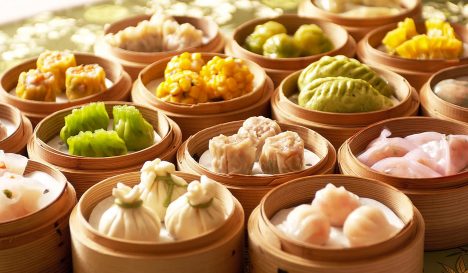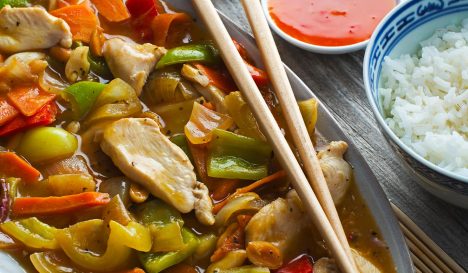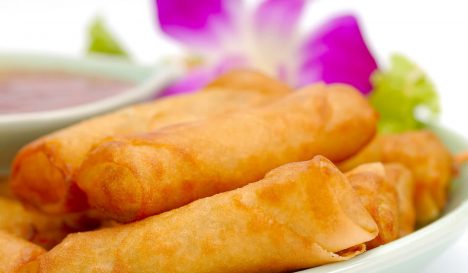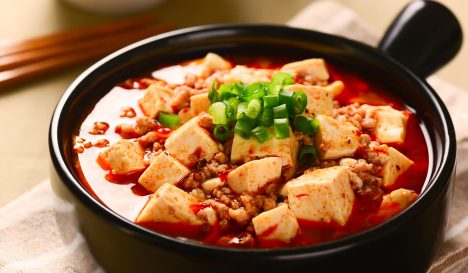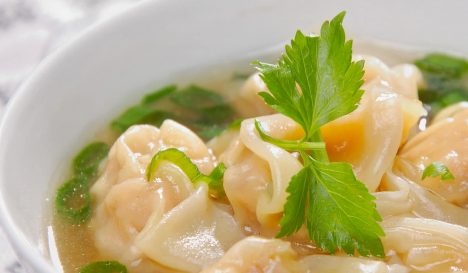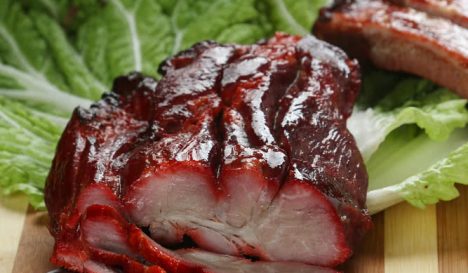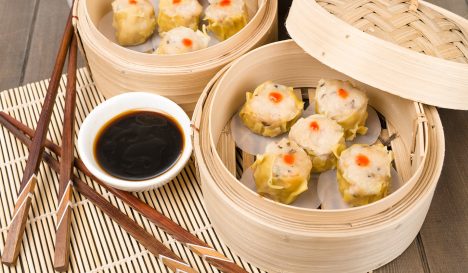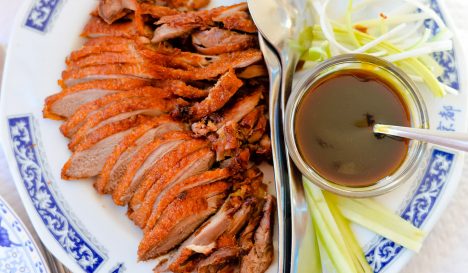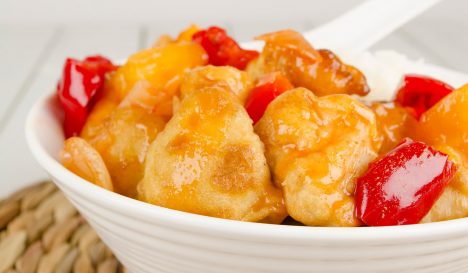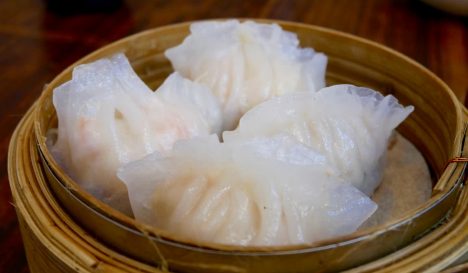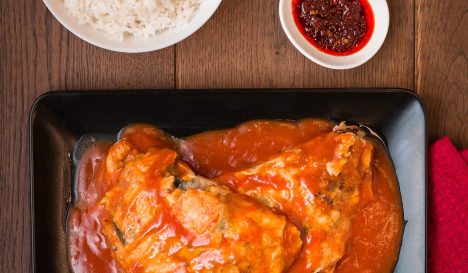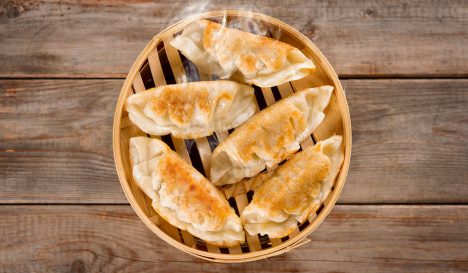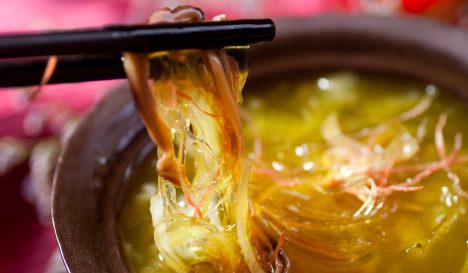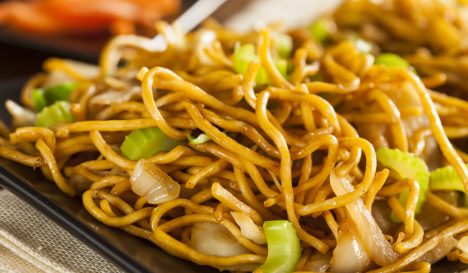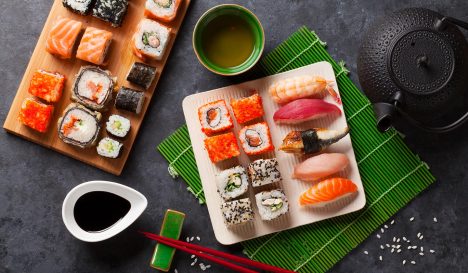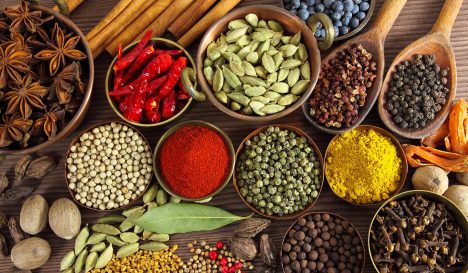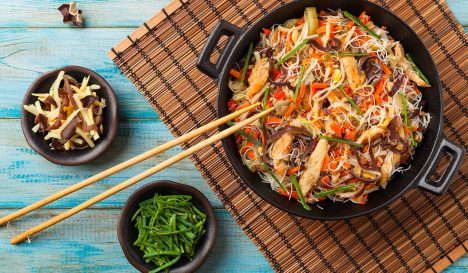Chinese cuisine
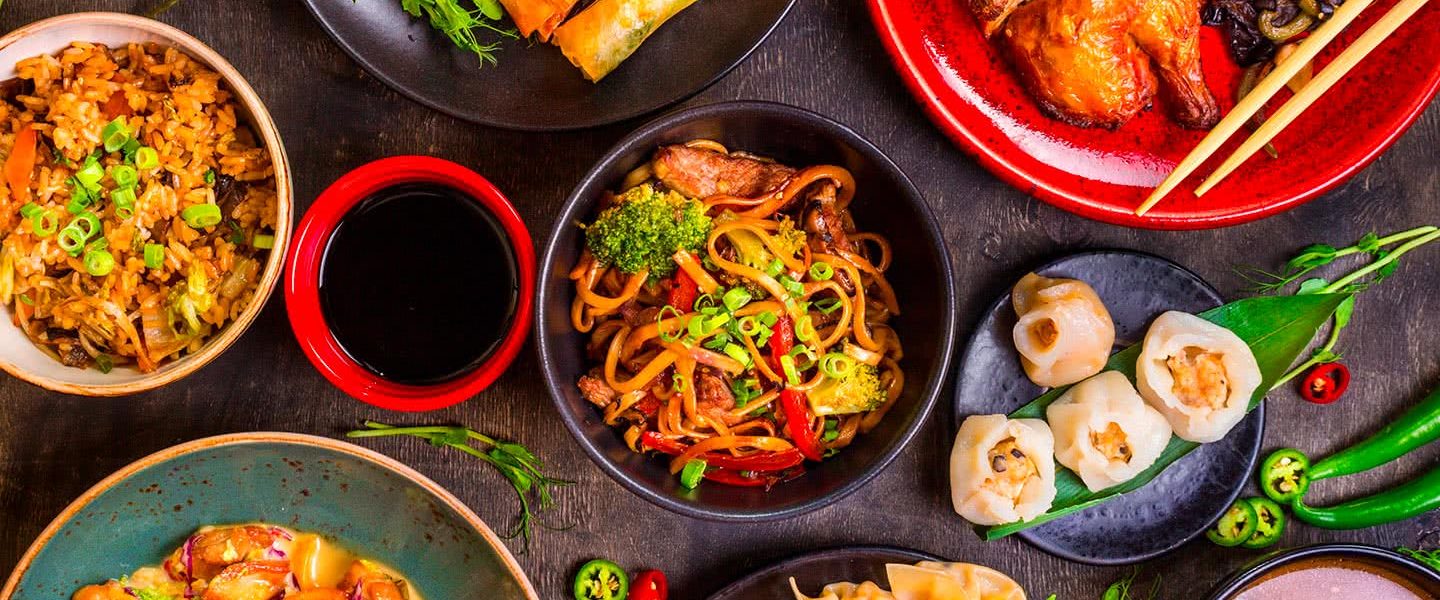
Chinese cuisine is one of the oldest and most diverse cuisines in the world. Each province – there are twenty-three in total – has its own cooking style, based on regional ingredients and preferences. These range from wildly picked greens in the mountains and fresh, salty seafood on the northeast coast to the light, sweet accents of Cantonese cuisine. In Central China, where chilli peppers are rampant, people love hot spicy food, while in Beijing, lamb is a favourite.
- Chinese variety
- Intriguing textures
- Typical ingredients
- Chinese food in Canada
- Chinese table manners
- For beginners
- Discover these Chinese dishes
Chinese variety
What all Chinese people have in common is that they like variety. Just as in Indian and Indian cuisines, China also always serves multiple dishes per meal – even on a normal weekday evening. If it is a banquet, then all the stops are pulled out. Since many dishes already contain a sweet element, desserts are unimportant. You won’t see dessert appear on the table very often.
Canadians are most familiar with, and love, Cantonese cuisine. This is the style of Chinese cooking that comes from Guangdong Province in southern China, where the climate is mild and there is an abundance of seafood. As a result, Cantonese cuisine features a lot of seafood dishes, as well as stir-fries and roasts.
If you venture north to Beijing, you’ll find a cuisine that is very different from Cantonese cuisine. The climate in Beijing is much harsher, with cold winters and hot summers. The food reflects this, with hearty dishes that warm you up in the winter and refreshing dishes to cool you down in the summer. One of the most famous dishes from Beijing is Peking duck, which is roasted duck that has been marinated in a sweet and savoury sauce.
Intriguing textures
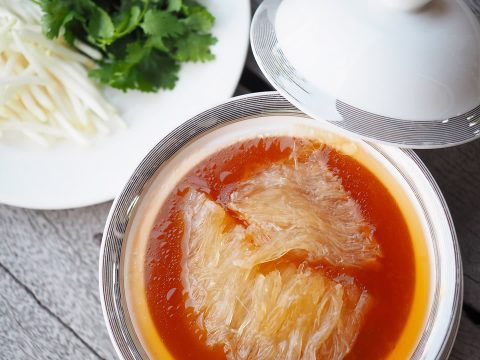
Where our concept of quality is mainly related to the taste of a dish, the Chinese are intrigued by texture. The more crunchy, tougher, more fibrous or chewier an ingredient, the more interesting and, therefore, tastier it is found. Some examples are: shark fins in shark fin soup, for example, duck feet, snakes and fish entrails. And if an ingredient has a special texture but a bad taste, it’s not a problem. The unpleasant taste is first extracted by cooking the thing for a long time, and then it is nicely flavoured with favourite Chinese seasonings such as hoisin sauce, garlic or five-spice powder.
Typical ingredients
The taste base of many Chinese dishes consists of garlic, ginger, five-spice powder (star anise, cinnamon, clove, Sichuan pepper, fennel seed) and roasted sesame oil, made from white sesame seeds. Fermented products such as soy sauce, rice vinegar, Shaoxing rice wine and fermented bean paste have a strong taste and aroma and are usually used in small quantities or processed into a dip, with the aim of adding a savoury dose of umami. Sichuan peppercorns, also called flour pepper, are typical for Chinese cuisine. These citrus-like grains are not actually pepper grains but the skin of a very small fruit. They are processed in salt, fried in oil until they release their aroma, or roasted in the wok and sprinkled over dishes. Pork has traditionally been the main meat ingredient of Chinese cuisine. Pigs were the first animals that were farmed for food. When Chinese people referred to meat, they were actually always talking about pork. And pork is still the star of many dishes, including cha sieuw and siu mai. It is stewed, stir-fried, steamed and fried.
Chinese food in Canada
Wherever there are historical Chinese populations, there are regional adaptations to traditional Chinese recipes. The history of Chinese food in Canada is a long and complicated one. Chinese immigrants first came to Canada in the 18th century, and they have been bringing their food culture with them ever since. With Chinese Canadians now one of the fastest-growing communities in Canada, Chinese cuisine has quickly become one of the most popular in the country.
Some of the most popular Chinese dishes in Canada include General Tso’s chicken, wonton soup, and egg rolls. If you’re feeling adventurous, you can also try some of the more unique options like stinky tofu or Century Eggs. Other well-known dishes include crispy duck with plum sauce, shredded spring onion, cucumber and pancakes; sweet and sour pork; chicken chow mein; beef in black bean sauce, and spring rolls. With Skip, you’ll find a wide range of Chinese restaurants serving sweet, savoury, and spicy dishes. Click here for Chinese restaurants near you.
If you’re in Edmonton, Skip recommends ordering from Wok Box. You’ve got to try their yummy noodle box combo. Folks in Kamloops will go wild for Bawk Bawk Chicken & Poutines’ mouth-watering Chicken Tenders.
Chinese table manners
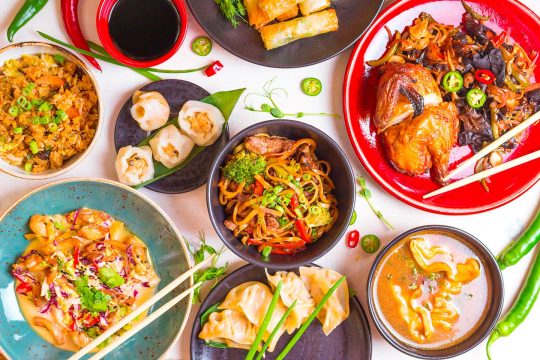
• The guest of honour or the head of the family is in charge at the table. As long as he or she remains standing, nobody can sit. And no one can start eating until he or she does.
• If you eat with a group in a restaurant, the numerous dishes are often placed on a turntable that sits on the table. This allows everyone to turn the desired dish towards themselves and transfer something from the bowl or dish into their own bowl.
• To prevent spills, you can raise the bowl of food to your mouth. Pick it up with your thumb and three fingers; the bowl should not touch the palm of the hand. Do not bend over the bowl, but sit up straight. Bending forward is considered rude and is also believed to be bad for the digestive system.
• Knives are seen as violent instruments and do not belong on the table. The Chinese eat everything with chopsticks.
For beginners
If you are new to Chinese cuisine, try the following dishes and you will get a good overview of what the country has to offer:
Soup
Crab and sweetcorn soup – The perfect blend of sweet and spicy, crab and sweetcorn soup is a favourite item that can be found on the menu of most restaurants in the UK.
Main
Roast Pork Chow Mein – A tasty mix of stir-fried egg noodles combined with shredded roast pork and vegetables.
Side dishes
Dim sum – These filled dough packages are actually one-dish dishes and the perfect way to get to know the different flavours of Chinese cuisine. You can expect, among other things, ha kau and siu mai on a mixed dim sum dish.
Dessert
Dumplings – Especially in a buffet, there are often plenty of sweet treats hidden between all the savoury things, such as dumplings.

